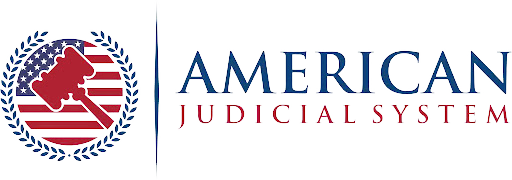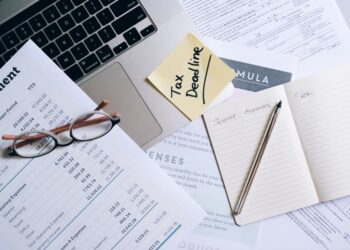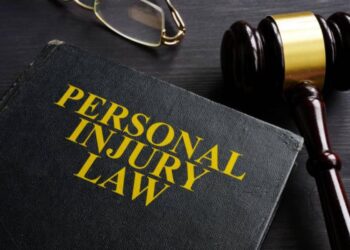Since the emergence of Artificial Intelligence (AI), the use or “misuse” of questionable images being shared, distributed or used to misinform when posted online has become a hot topic of debate.
Visuals have always been a key component of corporate communications and marketing materials, being uploaded in their millions on private, personal and professional social media and eCommerce channels. While it’s important to legally protect your ideas, it’s just as crucial to be aware of the legal landscape of image usage.
Indeed, the rise of generative AI and sophisticated manipulation tools have meant businesses face an increasingly complex legal landscape when it comes to image usage. This article explores the legalities surrounding images and how essential they are for protecting your business from potential litigation and reputational damage.
Learning Copyright Fundamentals
Copyright protection begins the moment an original image is created and fixed in a tangible medium. In the US, photographers and other image creators automatically receive copyright protection for their work without needing to register it formally. This protection grants creators exclusive rights to:
- Reproduce the image
- Create derivative works based on the image
- Distribute copies of the image
- Display the image publicly
While formal registration with the U.S. Copyright Office isn’t required for protection, it does provide creators with additional legal advantages, including the ability to sue for statutory damages and attorney’s fees in cases of infringement.
For businesses, this means that virtually every image found online or elsewhere is likely protected by copyright, regardless of whether it contains a copyright notice or symbol. The absence of such notice does not imply that an image is free to use.
Obtaining Proper Licenses and Usage Rights
There are many ways to profit from photographs so learning how to license your images is just as valuable for a business owner, marketeer or content creator. Whether you work for a huge corporation with in-house lawyers or you’re a freelancer working remotely in a country abroad, using images for a professional role can be a powerful, impactful and authentic way to showcase an organization’s products and the employees in their professional workforce. It goes without saying that images are created and reproduced over and over again to illustrate the multiple and diverse services businesses might offer across many varied formats of print and online marketing material.
To legally use any images created by others, businesses typically need to obtain official licenses or permissions. Although they vary, these licenses might specify:
- The scope of permitted use (commercial, editorial, personal)
- Duration of the license
- Geographic limitations
- Exclusivity terms
- Modification rights
Different licensing models also exist with respect to the specific needs of a business, including:
- Royalty-free licenses: Allow unlimited use of an image after a one-time payment
- Rights-managed licenses: Restrict usage based on specific parameters such as time, location, and purpose
- Extended licenses: Permit additional uses beyond standard licenses, such as merchandise creation
- Enterprise licenses: Tailored for organization-wide usage across multiple projects
Failing to secure proper licenses is one of the most common ways businesses find themselves facing copyright infringement claims.
Justifying the Fair Use of Images
The “fair use” doctrine of photography and video creation provides limited exceptions to copyright protection, allowing the use of copyrighted materials without permission under certain circumstances. However, fair use in a business context is narrowly interpreted and depends on four primary factors:
- The purpose and character of the use (commercial vs. nonprofit, transformative vs. reproductive)
- The nature of the copyrighted work
- The amount and substantiality of the portion used
- The effect on the potential market for the original work
Businesses often mistakenly assume that minor modifications to an image, attributing the source, or using it for seemingly innocuous purposes constitutes fair use. In reality, commercial use of images typically faces greater scrutiny, and courts are less likely to find fair use in a business context compared to educational or journalistic settings.
In order to be cautious, organizations need to learn how to implement best practices and robust policies around image usage, including:
- Maintaining proper documentation of all image licenses and permissions
- Providing regular training to employees on copyright compliance
- Conducting image audits of websites and marketing materials
- Using reputable stock photo services with clear licensing terms
- Labelling AI-generated images to maintain transparency
- Verifying the authenticity of all images before publication
- Considering watermarking business-created images to protect your own copyright
Coping with the Challenges of Generative Images
The emergence of AI-generated imagery has introduced unprecedented legal complexities. With such rapid uptake and continuous evolution, the tech is pushing enterprises towards self-governance frameworks founded on ethical considerations. For the legal sector, the issues raised around Intellectual Property (IP) remain one of the leading and most contentious issues in respect of AI governance.
Several key issues have emerged:
Copyright Uncertainties
Today, the copyright status of AI-generated images remains legally ambiguous. While the US Copyright Office has stated that purely AI-generated content cannot be copyrighted without substantial human creative input, businesses using such tools may still face claims from:
- Owners of images used to train the AI models
- Developers of the AI systems themselves
- Subjects depicted in the generated images
Privacy and Consent Issues
AI-generated images that depict real people—particularly celebrities or public figures—raise serious privacy concerns. The creation and distribution of “deepfakes” or manipulated images may violate:
- Right of publicity laws
- Privacy statutes
- Defamation laws
- Anti-impersonation regulations
Recent cases involving AI-generated images of public figures such as Donald Trump and Emmanuel Macron highlight the potential for misuse and the legal consequences that may follow.
Misinformation and Legal Liability
Businesses that knowingly or unknowingly distribute misleading AI-generated images may face legal repercussions under various statutes:
- Consumer protection laws prohibiting deceptive business practices
- Securities regulations for publicly traded companies
- Election laws if the content could influence political processes
- Industry-specific regulations (such as in healthcare or financial services)
Being Aware of Copyright Infringement
The penalties for unauthorized image use can be severe and multifaceted:
Legal and Financial Penalties
Copyright infringement can result in:
- Statutory damages up to $150,000 per infringed work for willful violations
- Actual damages and lost profits
- Attorney fees and court costs
- Injunctive relief requiring removal of the infringing content
Reputational Damage
Beyond financial penalties, businesses may suffer lasting reputational harm through:
- Public litigation coverage
- Loss of consumer trust
- Damaged relationships with content creators and partners
- Negative social media attention
As image creation and manipulation technologies continue to evolve, the legal framework surrounding image usage will undoubtedly continue to adapt as well. For businesses, staying informed about these changes and implementing proactive compliance measures isn’t just about avoiding litigation—it’s about respecting creators’ rights, maintaining consumer trust, and upholding ethical standards in an increasingly visual business landscape.
By approaching image usage with caution, transparency, and respect for copyright principles, businesses can effectively leverage visual content while minimizing legal risks.










